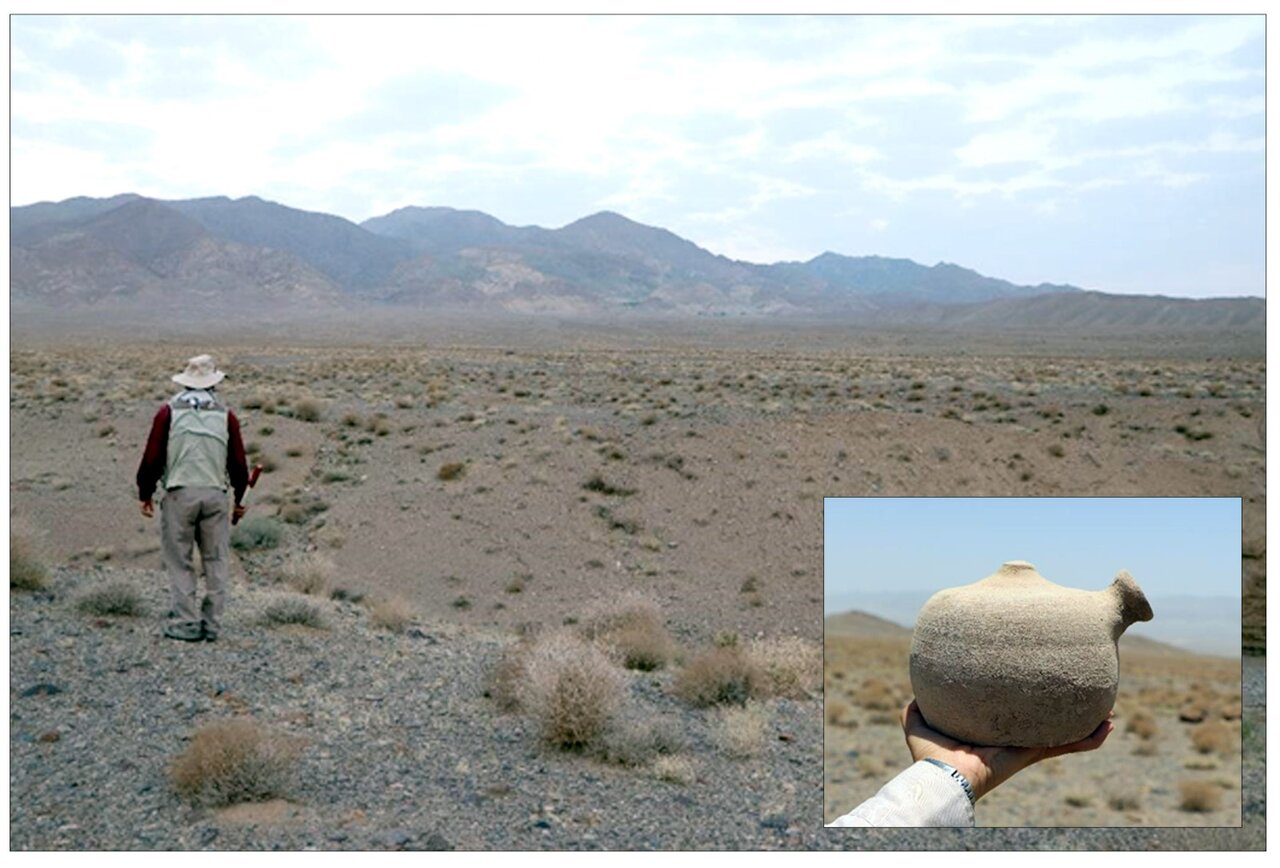Archaeologists race to preserve looted Parthian-era cemetery in Yazd

TEHRAN - Archaeologists have launched a major effort to document and preserve the looted Gour-e Kafari Cemetery, which is located in Bahabad county of Yazd province, officials from the Iranian Center for Archaeological Research (ICAR) announced.
In June 2025, a major archaeological survey and test excavation began at the Gour-e Kafari Cemetery site. The project is directed by Dr. Mohammad Hossein Azizi Kharanaghi, Deputy for Research at the Iranian Center for Archaeological Research (ICAR).
The site, located in the southwest of Bahabad city near Kouvjan village, is approximately 156 km from Yazd, the provincial capital. Despite its vast cultural depth, Yazd Province remains one of Iran’s most underexplored archaeological regions.
“For decades, this region has been overshadowed by the architectural fame of Yazd’s historical districts,” Dr. Azizi Kharanaghi explains. “But beneath its desert surface lies a much older story—one we’re only just beginning to uncover.”
The situation in Bahabad county is even more critical. “This part of Yazd has virtually no established archaeological sequence. It’s a complete blank on the cultural-historical map,” he emphasizes. This lack of systematic research has left ancient sites vulnerable to damage. According to Dr. Azizi Kharanaghi, Yazd province receives “the smallest share of archaeological surveys in the entire country.” The consequence: vast swaths of undocumented heritage and a fragile understanding of the region’s past.
Gour-e Kafari Cemetery is a striking example. Spread over nearly 1,000 hectares, the survey identified 1,793 graves—evidence of a large and long-used burial ground.
“This level of density, across such a wide area, is scarce,” says Azizi Kharanaghi.
“Kouvjan’s Gour-e Kafari Cemetery is without question one of the most expansive burial landscapes from the Parthian period in Iran.”
Yet the site has suffered devastating losses. For over 40 years, looters have ravaged the cemetery. Dr. Azizi Kharanaghi estimates that more than 90% of the graves have been destroyed.
“We are quite literally racing against time. This site has been bleeding for decades,” he states. “Had it been registered earlier, we might have saved much more.”
Efforts to protect the site had previously stalled. “The lack of expert recognition meant the cemetery was never registered on the National Heritage List,” Azizi Kharanaghi notes. “When a site’s importance isn’t clearly understood or documented, it becomes invisible to those in charge of protecting it.”
To better understand the cemetery, the team conducted test excavations in five graves. Due to the graves’ shallow construction and soil conditions, few human remains were preserved.
“The environment here accelerates decay—moisture seeps into the graves easily, leaving behind only fragments of bone in most cases,” he added.
Grave goods were typically minimal, consisting of a pair of ceramic vessels placed near the head or feet, and small bronze objects, such as bracelets, rings, and beads. Based on the preliminary analysis, the cemetery likely dates to the Parthian period (247 BC – 224 CE).
“We believe this was the resting place of ordinary people—farmers, herders, perhaps miners—who lived and died in this region more than 1,800 years ago,” he suggests.
“Still, we must emphasize: this is only an initial hypothesis. Our interpretations will evolve as more data comes in.”
Following the completion of the fieldwork, the research team’s top priority is preparing a formal registration dossier for the cemetery.
“We are fully committed to seeing this site added to the National Heritage List. It’s not only a matter of preservation but of restoring dignity to a community whose memory has been erased by neglect and looting,” Dr. Azizi Kharanaghi affirms.
The project is funded by Bahabad Municipality and conducted under the supervision of the Research Institute of Cultural Heritage and Tourism.
AM
Leave a Comment